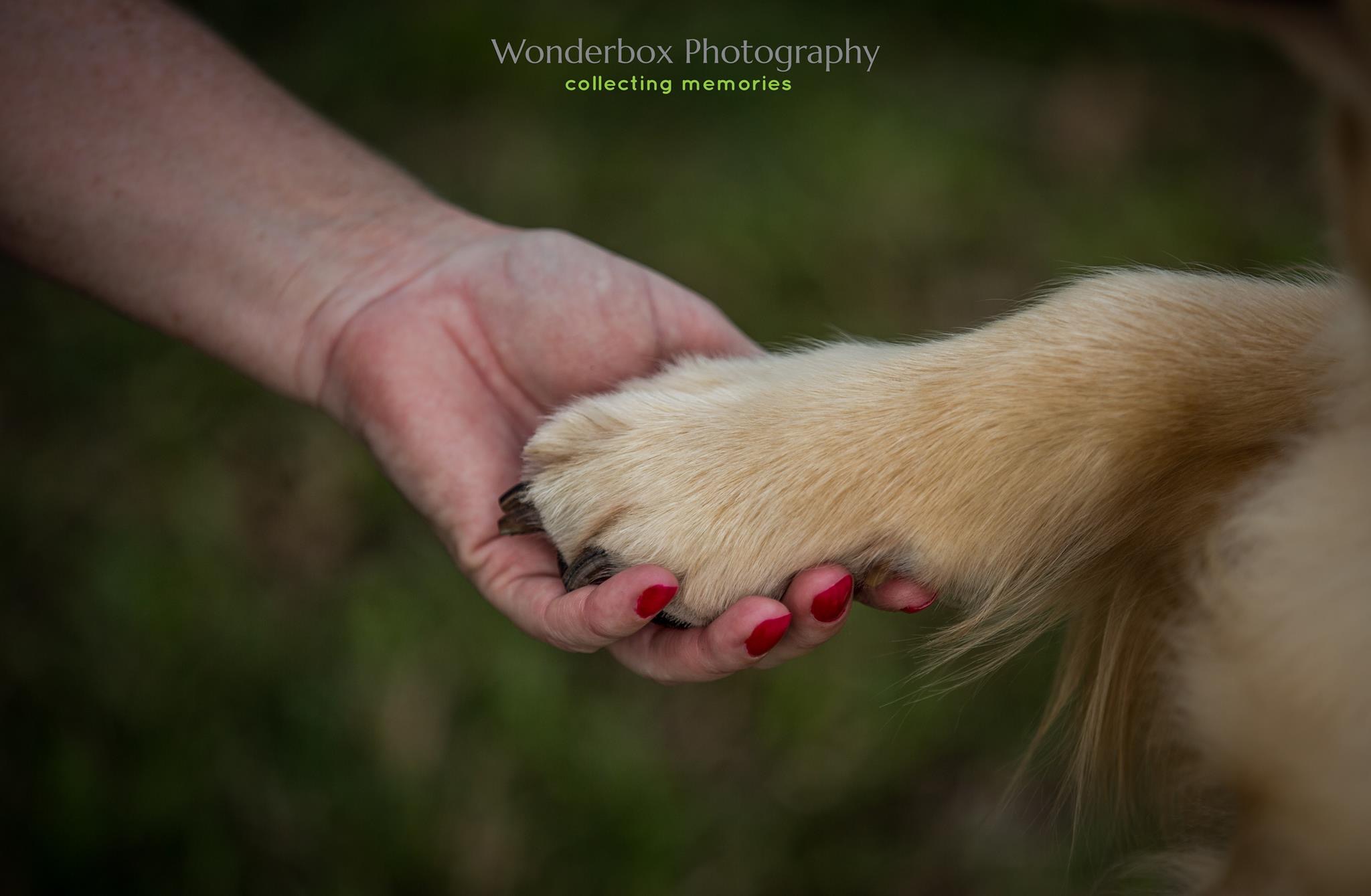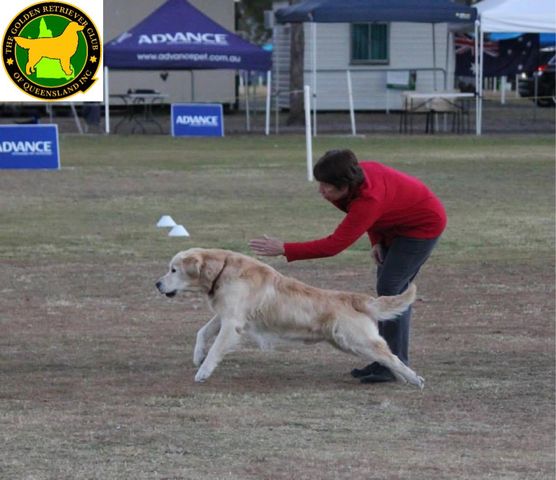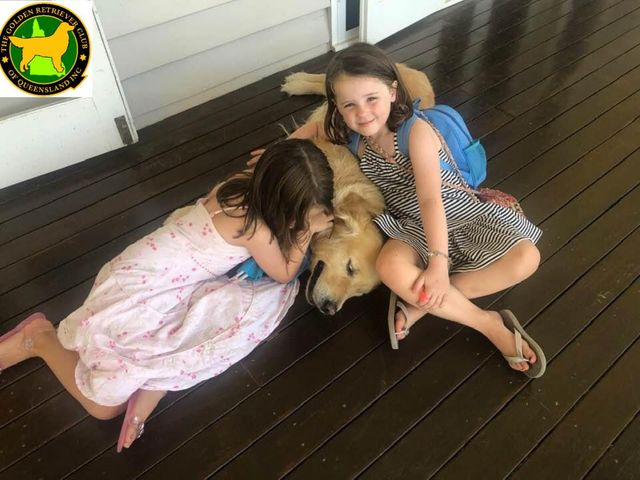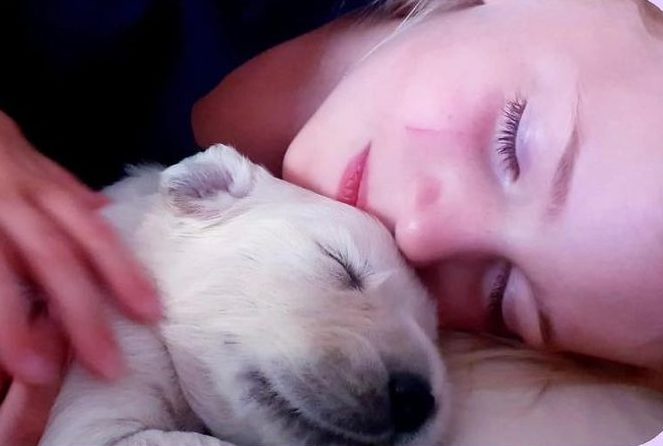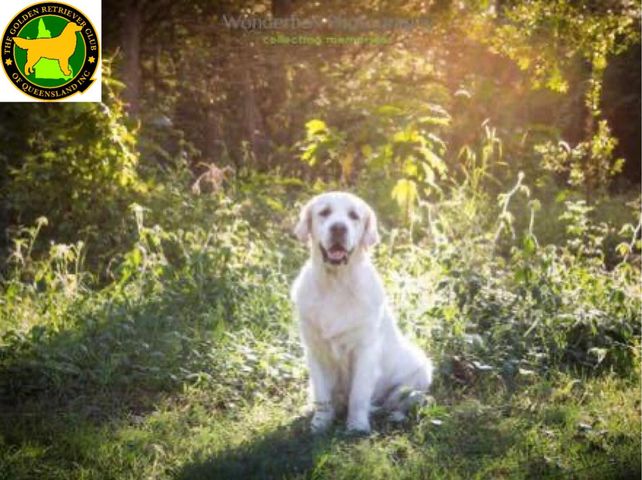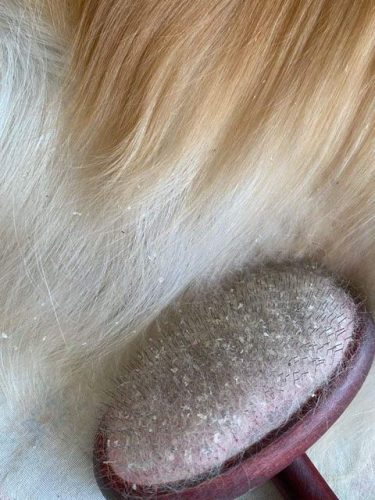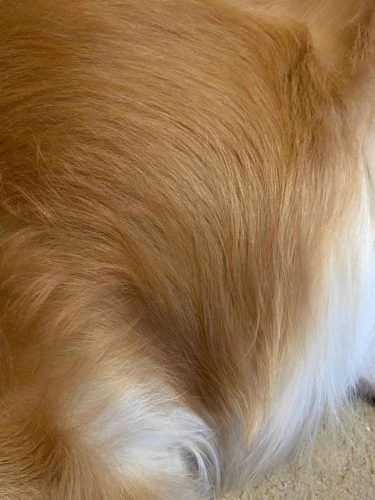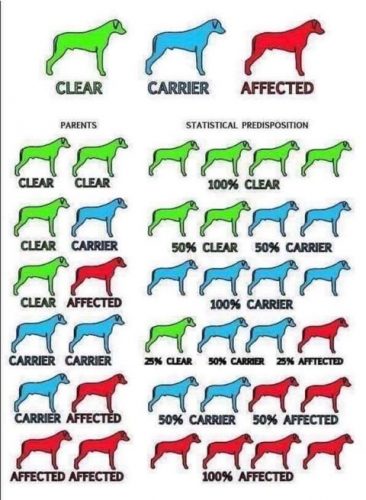Eye Diseases in Golden Retrievers
Entropion
Entropion is an inherited condition of the eyelid where the border of the eyelid turns in and hair normally on the outside of the lid rubs on the surface of the eye (cornea). It usually affects the lower eyelid. Entropion is most common in dogs less than one year of age and causes irritation to the eye and in severe cases ulceration of the cornea. Surgery is required.
Distichiasis
Distichia (extra eyelashes) grow from glands in the eyelid edge on to the cornea. Depending on a number of factors, extra eyelashes may or may not cause irritation to the eyes. If there is irritation, surgery is indicated.
Persistent Pupillary Membranes (PPMs)
Many Goldens are affected by the mildest form of PPMs. These are small strands of iris tissue that run across the surface of the iris and they do not cause clinical signs.
Imperforate Tear Punctum
In some Goldens the lower tear duct opening (punctum) in the eyelid does not form. Affected dogs present with a watery eye as a pup. A new tear duct can be surgically created.
Cataracts
A cataract is any opacity in the lens. There are many causes of cataracts, some of these are inherited. If the cataracts are present in both eyes and they mature the dog may become blind. Surgery is available in some cases.
The posterior polar subcapsular (PPS) is better known as the star cataract. It is usually in both eyes and becomes apparent from 6 to 18 months of age. Some dogs develop this problem as late as seven years of age. This cataract may be slowly progressive, but it rarely interferes with vision.
Progressive Retinal Atrophy (PRA)
The retina is the light sensitive layer of tissue at the back of the eye. It is responsible for registering visual stimuli and transmitting them through the optic nerve of the brain. In retinal atrophy, this layer of tissue gradually degenerates. Affected dogs have night blindness, progressing to day blindness and in the later stages cataracts may develop.
Heart Disease in Golden Retrievers
Golden Retrievers can suffer from inherited heart disease. The breed’s primary heart problem is Subarterial Aortic Stenosis (SAS). This disease can be fatal from an early age. Again, breeders should be checking for the presence of disease in breeding stock. Certificates should be checked to ensure the dog is clear from any disease and they should hold a clearance AFTER the age of 12 months. A puppy clearance is not a clearance to verify suitability for breeding. (Heart certification is not compulsory for the registration of the litter).
Aortic Stenosis
This disease of dogs arises when abnormal tissue near the aortic valve obstructs the flow of blood out of the left ventricle. If severe enough it can eventually lead to CHF and ventricular arrhythmias.
Symptoms include exercise intolerance, rear limb weakness, syncope (passing out), cough, shortness of breath, and even death.
A heart murmur along with an arrhythmia is a clue to this disease.
Radiographs and electrocardiograms are of help in the more advanced cases. Echocardiograms are helpful in the moderate to severe cases.
Surgery and balloon catheter dilation are helpful but may be of limited value. Medical therapy is used to treat CHF.
Mildly affected dogs can have a good quality of life. If the problem is more severe the prognosis is not as good.
Ichthyosis
Ichthyosis of Golden Retriever breed A skin disease prevented thanks to a DNA test.
Ichthyosis results in a profusion of dandruffs. A majority of the Golden Retriever are carriers of the gene responsible for the disease. A reliable DNA test can screen stud dogs and brood bitches, in order to adapt matings and avoid birth of affected puppies and spread of the disease in the breed.
An incapacitating hereditary disease Ichthyosis leads to a skin disease. The first symptoms appear between 1 and 18 months by multiplying large dandruff visible on the back and belly. The skin looks dirty and scaly, and becomes dry, rough and with a hyper-pigmentation. Increased hygiene measures (special shampoos) should be considered to prevent infectious complications. The breeder or veterinarian can confuse Ichthyosis with the presence of parasites on the skin that may also be responsible for dandruff.
A very frequent disease
More than 50% of Golden Retrievers in Europe are carriers of the genetic mutation responsible of Ichthyosis. A breeder can mate without noticing a male « carrier » and a female « carrier » and produce a litter containing affected puppies.
A dog « carrier » of the mutation will not develop the disease but transmits it to 50% of the puppies. A stallion « carrier » of the mutation which is used a lot for reproduction, spreads the disease through the breed and helps to increase the frequency of the mutation and multiply the number of affected dogs.
A preventable disease
A puppy can be affected if his two parents are carriers of the mutation. Breeders unaware of Ichthyosis can mate stud dogs and brood bitches carriers of the mutation and produce affected puppies which will not develop the disease before the age of 6 months.
A DNA test called ICT-A, can detect Ichthyosis of the Golden Retriever with a reliability above 99%
Avoid the birth of affected puppies In order to secure its kennel and avoid the risk of production of affected puppies, the breeder must screen its breeding dogs thanks to the ICT-A DNA test.
When acquiring a puppy for breeding or when a stud dog is used for a mating, the breeder verifies the genetic status of the dog for Ichthyosis asking for the result of the ICT-A DNA test.
A DNA test easy to perform
The veterinarian performs a simple cheek swab and sends it to the laboratory. The result, delivered within few days, indicates if the tested dog is clear, carrier or affected for Ichthyosis. A genetic certificate displaying the result must be used as a guarantee for a mating or to justify the sale of puppies clear of Ichthyosis.
The veterinarian who notices early skin issues in a young Golden Retriever puppy can process a DNA test to confirm or refute the diagnosis of Ichthyosis. If the dog is affected, parents have to be screened.
A breeder who knows the genetic status of the dog can select its breeding dogs, adapt matings, avoid the birth of affected puppies and limit the spread of this skin disease in the breed.
Reproduction of the article is permitted if the source « ANTAGENE laboratory » is acknowledged
Before full grooming
After full grooming. Ichthyosis barely noticeable. This disease does NOT cause the dog any discomfort or “itchy” skin.

